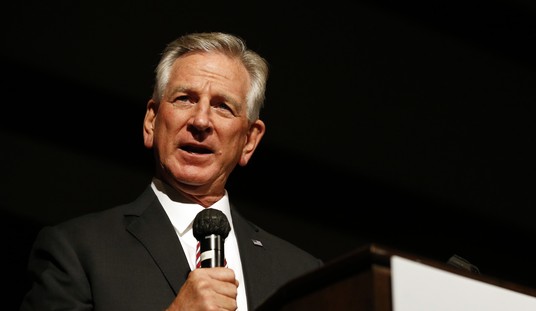By the late 1960s, an America that had been governed primarily by “liberal” politicians for much of the century seemed to be on the verge of collapse. Kennedy was assassinated in the Cold War. LBJ scaled FDR’s New Deal up to Texas-sized proportions, only to discover, the hard way, that a government that tries to do everything ends up doing everything very badly. Urban riots seemed to be omnipresent, Myron Magnet wrote in City Journal:
In 1965, riots raged for six days in Los Angeles’s Watts ghetto, leaving over 30 dead and whole blocks in ashes; in 1967, over 40 died in the Detroit ghetto riots before the National Guard, with army reinforcements, restored order; and over 25 died in the Newark riots, in which the looters, shooters, and arsonists left $10 million of property in ruins. A year later, after Martin Luther King’s assassination, rioting raged in black neighborhoods for days in over 100 cities. Meanwhile, black radicals—most notably, the weapons-toting, cop-killing Black Panthers—were calling for armed revolution.
The riots resulted in wide swatches of “white flight” from these urban areas and decades of economic collapse. RFK and MLK were assassinated. The New Left rioted in protest of the Old Left at the Democratic Convention in Chicago. And New York went from the Mad Men swank of the early 1960s to the Death Wish/Taxi Driver/Taking of Pelham 1,2,3 nadir of the ’70s.
New Yorkers knew how badly the rot was setting in, and how Mayor John Lindsay contributed to it; as City Journal’s Fred Siegel wrote in 2010, assessing his legacy:
Lindsay’s entitlement liberalism doubled the city’s welfare rolls at a time when black male unemployment was 4 percent, so that when the economic downturn hit in 1969 and 1970, his policies—a bank tax, an income tax, a commuter tax, a stock-transfer tax, and higher real-estate taxes—made a bad situation far worse. By 1970, notes Josh Freeman, one of the contributors to the Roberts book, “Lindsay’s government employed more people than the garment, banking, and longshore industries put together.” In Lindsay’s second term, the city, reeling from rising costs and crime, bled 257,000 jobs.
It was Lindsay’s hubris and the hype that surrounded him that made his mayoralty special. Wisdom was sorely lacking. In 1972, journalist Steven Weisman, a contributor to the Roberts book, wrote that “the mayor has never been able to stop the city’s downward spiral. Services have continued to decline, division has deepened among races and economic classes, and there have been unending crises. . . . the quality of life in New York City has never seemed more bleak, its government never more sluggish, wasteful, and finally even helpless.” In 1970s New York, where just asking for a cup of coffee could get you a fat lip, the growth in crime and welfare and the decline in employment cut a generation of African-Americans off from the larger promise of American life, producing what would come to be called the underclass.
In the end, the city was worse off in 1974 than it had been when Lindsay took over in 1966. Not all the problems were of his making, of course. In fact, most predated his tenure. They worsened after he left office and were common to most other large northern cities of the period. But Lindsay, his minions in the press insisted, was supposed to be exceptional. He was elected to stop the city’s decline and rejuvenate life in New York. Instead, in the words of journalist Murray Kempton, he was a “splendid flop. . . . Failures can have their splendors and above and beyond all the variously unsuccessful Mayoralties that have been New York’s ration for the last 40 years, John Vliet Lindsay’s is the only shining failure.”
But when you’ve got a reelection on the line, how do you convince the electorate to let your administration keep their phoney-baloney jobs?
Scare the hell of the voters!
New York’s WNET-13, under the appropriately sardonic title of “Fun City Revisited,” has several minutes worth of John Lindsay 1969 campaign ads; the above two clips are my favorite. The first astonishing clip tells the voters that as bad as things are, they could always be worse — so very, very worse that you almost expect to hear Dr. Egon Spengler telling the voters to “Try to imagine all life as you know it stopping instantaneously and every molecule in your body exploding at the speed of light” under the images, which look like they were filmed on the rubble-strewn Hue City set of Stanley Kubrick’s Full Metal Jacket.
The second clip is better known; last week on Twitter, Dave Weigel of Bloomberg described it as “the classic 1969 ‘I suck’ ad,” and compared it to a new campaign ad by a more recent flailing big city “Progressive” attempting to hang on to his own phoney-baloney job, Rahm Emanuel:
[jwplayer player=”1″ mediaid=”79306″]
Could Chicago get any worse with or without Rahm? I’ll bet plenty of New Yorkers in 1969 thought the worst was over as well.
Update: And speaking of Rahm, pass the popcorn: “Jesse Jackson backs Garcia over Emanuel for Chicago mayor.”










Join the conversation as a VIP Member